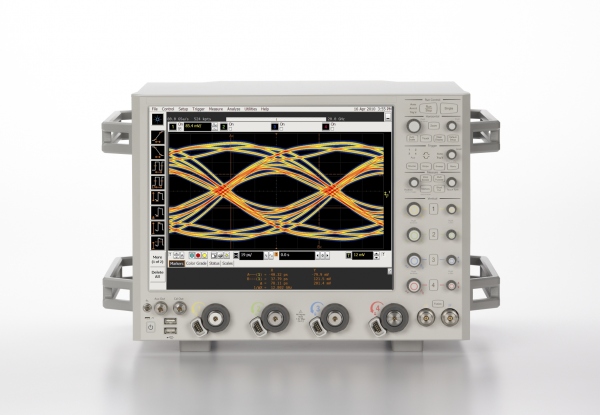We’ll have to admit that we were really jealous when [Shahriar] sent us a video he made, in which he casually explains how a $500,000 160GS/s 62GHz oscilloscope works and then starts playing with it.
Even though you need to be quite familiar with electronics to fully understand the oscilloscope’s inner workings, [Shahriar]’s step by step explanation is still approachable for those who only understand the basics.
In the first half of the video he uses the manufacturer’s documentation which contains the oscilloscope block diagrams, so you’ll also learn about:
- timer interleaved Analog to Digital Converters (ADCs), which allows you to increase your input sampling rate by using several of them
- phase-locked loops, which use a reference clock to generate a much faster clock signal
- custom made dies and the materials used for high frequency electronic components
In the second half of the video [Shahriar] connects a pseudo random binary sequence generator and uses the oscilloscope to make several measurements that you’d typically want to know for high speed signals (jitters, eye quality factor…). He later performs a small experiment where he up-converts the frequency components of two random 3.12Gbit/s signals and tries to recall each original signal using the oscilloscope functions, making this part of the video a bit harder to keep up with.
















I will only buy one, if there is a flux compensator inside;)
Don’t turn it on. Take it apart.
LOL I was just thinking “Damn eevblog should do a teardown”.
+1 I was thinking the SAME THING!!
+1. I want to see inside the shazzy.
jeeeeeeeeeeeeeeeeez
i ‘gasumed … would not be a very good every day scope but i can see the uses!!!
trade for a kidney?
Kidneys aren’t that special. Maybe you could trade for a set of eyeballs or lungs.
The company is only willing to barter for the hand in which you hold your soldering iron.
oh the irony!
get it? iron-y? … will screw you guys!
granted if your working in 62ghz your probably not soldering your own PCBs!
I’ll wait till it turns up, broken, on ebay…. these fancy toys always do eventually. }:¬)
Teardown time!
not before the drop-test!
I sometimes use a 25GHz (90Gs/s) scope at work, it runs Windows Vista and has minesweeper.
What more can you wish for?
XP?
(sorry, I mean Linux ;-)
But will it blend?
Does it come in black ?
Not enough buttons for that amount of money, touch-screen my ass(read in Dave accent/voice).
Probably *not* going to be one of those things I’m going to buy if I win one of those huge lotteries. I hear this would cost only 250,000 if they used Linux rather than MS Windows ;) On those torque collars no doubt there is going to be someone in the shop who keeps turning after it clicks to “make sure it’s tight”, like some car drivers who turn the gas cap forever after it’s a tight it going to get.
I would be curious to know what you guys thought about the second experiment.
it was really interesting! though the open questions left me scratching my head! it was very cool to see the difference between the reconstruction of the sequence that was at a lower freq vs the one at high freq. you casually mention it was due to improper filtering but i didn’t really get why you had this problem. keep up the work, your vids are awesome, also lol, futurama!
Not so much on a comment on this specific experiment, but more general to your videos as a whole. I really like your approach to these, while I understand the concepts I am very very very far from your expertise. It is refreshing to see how you share this knowledge in a very approachable manner that also leaves room for us to explore on our own to get that last bit of practical knowledge in as we experiment. I for one am very thankful for your channel! Thanks Shahriar!
Since the owners of hack a day changed most posts are not even hacks. Just content about high-end electronic stuff unrelated to DIY hacks from household / common stuff.
Totally disagree. I feel they may have even improved.
Dear Santa…
0,5kk $ and windows ? this is a joke ? :D
I still waiting for a lulzy video of someone accidentally oopsing an expensive scope/ spectrum/network analyzer and their face afterwards. Killing a 50Ohm input by overload is quite easy, especially with fancy chips with 33 GHz BW.
I personally would never play with such an expensive, borrowed scope, because these things sometimes fail even without you doing anything wrong, especially the LeCroy scopes, and explaining to the owner, why his 500k$ scope doesn’t work any more after you had it, is certainly beyond embarrassing.
“of course it runs Windows 7” why “of course”?
For the irony, I suppose.